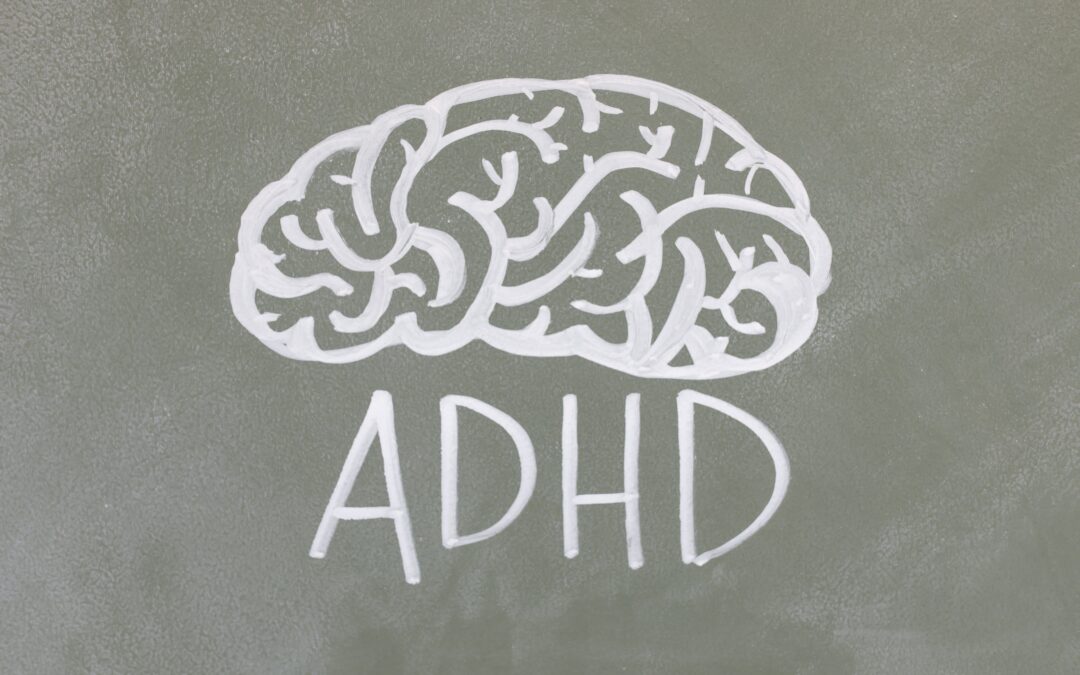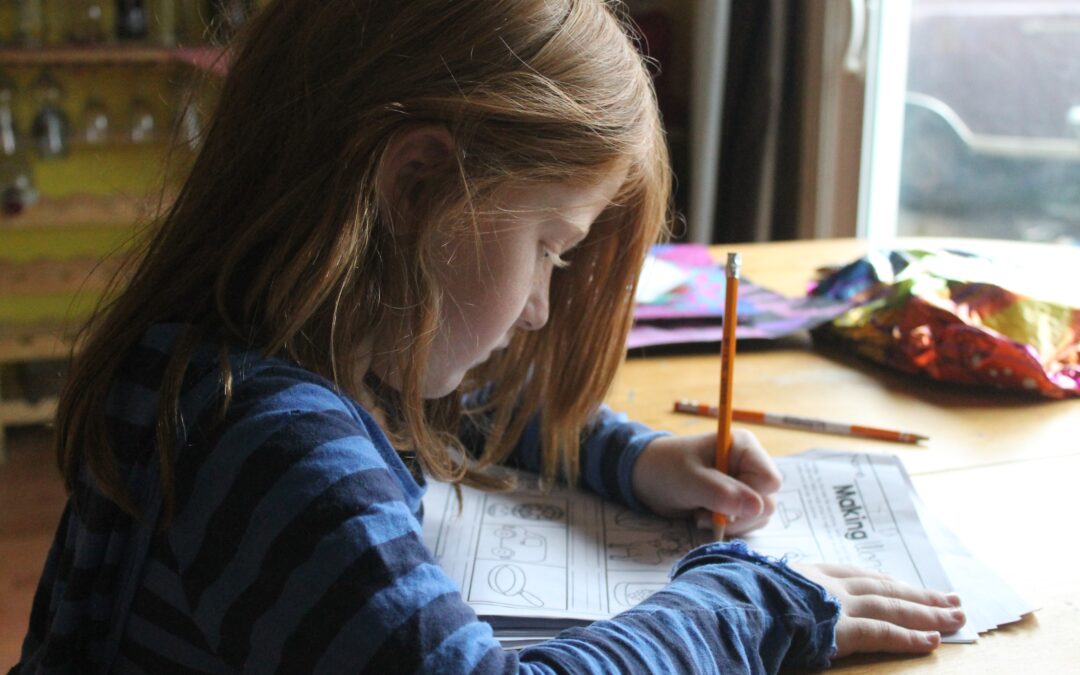
by Helen Kenworthy | Sep 12, 2023 | Education
Attention Deficit Hyperactivity Disorder (ADHD) is a neurodevelopmental disorder that affects people of all ages, though it is often first diagnosed in childhood. One of the most significant challenges individuals with ADHD face is in the realm of learning.
Learning with ADHD can be a complex and multifaceted journey, but with the right strategies and support, it is possible to thrive academically and beyond.
In this blog, we will explore the nature of ADHD, its impact on learning, and practical strategies to help individuals with ADHD succeed in educational settings.
Understanding ADHD
ADHD is characterized by difficulties with attention, hyperactivity, and impulsivity. It’s essential to recognize that ADHD is not a choice or a result of laziness. It is a neurobiological condition that affects the brain’s executive functions, such as working memory, organization, and self-regulation. This can make traditional learning environments challenging for individuals with ADHD, but it doesn’t mean they cannot excel with the right support.
Symptoms and Diagnosis
The symptoms are typically classed in two different categories – inattention or hyperactivity/impulsivity. Some can also have a combination of these two traits.
The symptoms of people classed as predominantly inattentive are:
- Distractibility
- Difficulty focusing or listening
- Easily becoming bored
- Daydreaming
- Failing to follow through with instructions
- Difficulty organising
- Often forgetful
Symptoms of those who are classed as predominantly hyperactive/impulsive are:
- Fidgeting
- Failing to stay seated
- Constant talking
- Uncontrollable physical activity
- Difficulty staying quiet
- Impatience
- Interrupting often
Impact on Learning
1. Attention Difficulties
The hallmark symptom of ADHD is difficulty sustaining attention, which can lead to distractibility, forgetfulness, and difficulty following instructions. In a classroom setting, this can result in missed information and reduced academic performance.
2. Hyperactivity and Impulsivity
Hyperactivity and impulsivity can disrupt learning environments, making it challenging for individuals with ADHD to sit still, wait their turn, or think before acting. These symptoms may lead to social challenges and disciplinary issues.
3. Executive Functioning Challenges
Executive functions, such as planning, organization, and time management, are often impaired in individuals with ADHD. These difficulties can hinder the completion of assignments, project planning, and studying effectively.
Effective Strategies for Learning with ADHD
1. Medication
Medication, prescribed and managed by a healthcare professional, can be an essential component of ADHD management. Stimulant and non-stimulant medications can help improve focus and reduce impulsivity.
2. Individualized Education Plans (IEPs) and 504 Plans
IEPs are accommodations that can provide necessary support to students with ADHD. These plans may include extended time on tests, preferential seating, and additional breaks.
3. Structured Routines
Consistent daily routines help individuals with ADHD better manage their time and responsibilities. Establishing a structured schedule for studying, completing assignments, and attending classes can be tremendously helpful.
4. Organizational Tools
Tools like planners, digital calendars, and task lists are invaluable for individuals with ADHD. They can help with keeping track of assignments, deadlines, and responsibilities.
5. Break Tasks into Smaller Steps
Breaking tasks into smaller, more manageable steps can make them less overwhelming. It’s easier to focus on completing one small task at a time than trying to tackle a large project all at once.
6. Utilize Visual Aids
Visual aids, such as color-coded calendars, charts, and mind maps, can help with organizing information and improving memory.
7. Kinesthetic Learning
Incorporating movement into the learning process can be beneficial. Individuals with ADHD often learn better when they can engage their bodies, such as through hands-on activities or using fidget tools.
8. Mindfulness and Relaxation Techniques
Mindfulness exercises and relaxation techniques, like deep breathing, can help manage anxiety and improve focus.
9. Seek Support and Advocacy
It’s essential for individuals with ADHD to seek support from educators, counselors, and healthcare professionals. Advocacy and self-advocacy skills are crucial in ensuring they receive the necessary accommodations and understanding.
Conclusion
Learning with ADHD may present unique challenges, but it’s essential to remember that individuals with ADHD also possess numerous strengths, such as creativity, resilience, and problem-solving skills. By implementing the right strategies and accessing appropriate support, individuals with ADHD can excel academically and thrive in educational settings. Moreover, increased awareness and understanding of
ADHD can help create inclusive learning environments that accommodate the diverse needs of all students, including those with ADHD.

by Helen Kenworthy | Sep 5, 2023 | Education
Co-teaching, a collaborative teaching model where two or more educators work together in a single classroom to support students with diverse learning needs, has gained popularity in recent years. This approach is often used to provide inclusive education and ensure that all students have access to quality instruction. However, like any educational strategy, co-teaching has its own set of advantages and disadvantages.
In this comprehensive blog, we will explore the pros and cons of co-teaching, shedding light on its potential benefits and challenges.
Pros of Co-Teaching
1. Enhanced Learning Experience
Co-teaching allows for a diverse set of skills and teaching methods. With multiple educators in the classroom, students benefit from a broader range of instructional approaches, which can cater to various learning styles and needs.
2. Inclusive Education
Co-teaching fosters inclusivity by accommodating students with disabilities, English language learners (ELLs), and those who require additional support. It creates an environment where all students can learn together, promoting diversity and understanding.
3. Differentiated Instruction
Teachers in a co-teaching partnership can differentiate instruction more effectively. They can tailor lessons to meet the individual needs of students, offering both remedial and advanced content within the same classroom.
4. More Individualized Attention
Smaller student-to-teacher ratios in co-taught classrooms mean students receive more personalized attention. Teachers can identify struggling students early and provide timely interventions.
5. Professional Development
Co-teaching encourages collaboration between educators. This collaborative atmosphere fosters professional growth as teachers learn from each other, share insights, and develop new teaching techniques.
6. Improved Classroom Management
Co-teaching can lead to better classroom management. With two teachers present, it’s easier to maintain discipline and address behavioral issues promptly, ensuring a conducive learning environment for all students.
7. Increased Flexibility
Co-teachers can adapt to unexpected changes more readily. If one teacher is absent or if students require additional support on a particular topic, the other teacher can step in seamlessly.
Cons of Co-Teaching
1. Differing Teaching Styles
Co-teachers may have contrasting teaching styles, philosophies, or approaches, which can lead to conflicts and confusion for students. Consistency can become a challenge.
2. Unequal Contribution
In some co-teaching partnerships, one teacher may end up doing the majority of the planning and teaching, while the other plays a more passive role. This can create frustration and resentment.
3. Lack of Space
Physical space in the classroom can become an issue with multiple educators and students in the same room. Crowded classrooms can make movement and organization difficult.
4. Limited Autonomy
Co-teachers often need to compromise on instructional decisions. This can lead to a loss of autonomy, particularly for experienced educators who are used to making independent choices.
5. Increased Workload
Co-teaching can be more time-consuming and demanding. Teachers must coordinate lesson planning, assessments, and communication, which can add to their workload.
6. Professional Compatibility
Finding the right co-teaching partner with compatible teaching styles, personalities, and work ethics can be challenging. A mismatched partnership can hinder the effectiveness of co-teaching.
7. Cost
Hiring additional teachers for co-teaching can strain school budgets, especially in situations where resources are limited.
Conclusion
Co-teaching is a pedagogical approach with the potential to benefit both educators and students. Its focus on inclusivity, differentiated instruction, and collaboration can create enriched learning environments. However, it’s essential to acknowledge and address the potential challenges, such as conflicting teaching styles and increased workload. Successful co-teaching relies on effective communication, mutual respect, and a commitment to the shared goal of enhancing student learning. Ultimately, the pros and cons of co-teaching should be carefully considered and balanced to determine its suitability for a specific educational context.

by Helen Kenworthy | Aug 29, 2023 | Education
Anxiety is a common emotion that even children experience. As they navigate the complexities of growing up, it’s crucial to equip them with tools to manage their worries and fears.
In today’s blog, we’ll explore a variety of anxiety busters tailored to kids, empowering them to conquer their anxieties and embrace a sense of calm and confidence.
1. Adventure Journal: Turning Worries into Art and Words
Encourage kids to create their own adventure journals—a safe space to express their thoughts and feelings. Provide them with colorful journals, markers, and stickers. Invite them to draw, write, or collage their worries, and then guide them to transform those worries into stories of resilience.
2. Mindful Moments: Simple Meditation Techniques for Kids
Introduce children to the world of mindfulness through playful meditation exercises. Teach them to focus on their breath, guiding them to inhale and exhale slowly. Incorporate visualization techniques, taking them on imaginary journeys to peaceful places. These techniques can help ease anxious thoughts and create a sense of inner peace.
3. Superhero Visualization: Conquering Fears with Imagination
Harness the power of imagination by encouraging kids to visualize themselves as fearless superheroes. Guide them through scenarios where they face their worries head-on using their superhero alter egos. This empowering exercise helps children feel in control and capable of tackling their anxieties.
4. Breathe Easy: Fun Breathing Exercises for Kids
Teach children that their breath is a powerful tool for managing anxiety. Introduce them to “balloon breathing,” where they imagine inflating and deflating a balloon with their breath. Another technique is “rainbow breaths,” where they envision inhaling vibrant colors and exhaling stress.
5. Laughter Prescription: Finding Joy to Diminish Anxiety
Laughter is a natural stress reliever. Engage kids with humor by sharing jokes, playing funny games, or watching light-hearted cartoons. Laughter not only lifts their spirits but also helps reduce anxiety levels.
6. Puzzle Power: Problem-Solving for a Peaceful Mind
Solving puzzles engages kids’ cognitive abilities and distracts them from anxious thoughts. Offer a variety of puzzles like jigsaw puzzles, Sudoku, or riddles. The sense of accomplishment from completing a puzzle can help boost their confidence.
7. Cuddle Companions: Finding Comfort in Stuffed Animals
Stuffed animals or soft toys can provide a sense of security and comfort during anxious moments. Encourage kids to create a special “cuddle corner” with their favorite stuffed animals—a cozy space to relax and feel safe.
8. Garden of Positivity: Planting Seeds of Calmness
Gardening connects children to nature and promotes mindfulness. Together, plant a small indoor garden with calming plants like lavender or chamomile. Teach them how to care for their plants, nurturing a sense of responsibility and serenity.
9. Creative Coping: Crafting Your Way to Calm
Engage kids in creative activities like painting, drawing, or crafting. These expressive outlets allow them to externalize their feelings and fears, turning anxiety into beautiful works of art.
10. Supportive Conversations: Building Open Communication
Above all, maintain open and supportive conversations with kids about their anxieties. Create a safe space where they feel comfortable sharing their worries. Offer reassurance, empathy, and understanding.
Conclusion
Helping children develop healthy coping mechanisms is an invaluable gift that lasts a lifetime. By introducing these anxiety busters, we empower kids to navigate their emotions, build resilience, and embrace a future filled with confidence and inner peace.

by Helen Kenworthy | Aug 22, 2023 | Education
In the realm of online education, engagement is the linchpin for successful learning outcomes. The challenge of capturing and maintaining students’ attention during virtual tutoring sessions necessitates a repertoire of well-crafted strategies.
In this in-depth exploration, we delve into each facet of effective engagement techniques, ensuring that both educators and learners reap the full benefits of online tutoring.
1. Creating a Positive Learning Environment
Establishing a welcoming atmosphere is the cornerstone of engagement. Initiating sessions with a warm greeting imbues a sense of camaraderie. A meticulously organized online workspace, free of clutter and distractions, elevates the learning experience. Equally pivotal is nurturing an environment of open communication, where students feel valued and encouraged to share their thoughts.
2. Setting Clear Learning Objectives
Clarity is key. Clearly articulating the session’s goals at the outset aligns expectations and paves the way for focused learning. By outlining what students can expect to learn and accomplish, educators instill a sense of purpose, thereby priming them for active participation.
3. Utilizing Interactive Content
The integration of multimedia elements transforms the virtual space into an engaging arena. Visual aids such as videos, animations, and interactive whiteboards inject vibrancy, aiding comprehension and stimulating curiosity. The dynamic nature of these elements keeps students enthralled and bolsters their understanding.
4. Varied Instructional Techniques
Diversity in instructional methods is a potent engagement strategy. Alternating between lectures, discussions, case studies, and hands-on activities caters to different learning styles. The ebb and flow of content and interaction maintain a dynamic pace, preventing monotony.
5. Incorporating Gamification
Transforming learning into an enjoyable endeavor, gamification captures students’ imagination. Interactive quizzes, educational games, and friendly competitions infuse an element of excitement, fostering healthy participation. The prospect of rewards or recognition further heightens motivation.
6. Encouraging Active Participation
Active engagement stems from dialogue. Craft thought-provoking questions that encourage students to share their insights. Real-time polls and surveys function as instant feedback mechanisms, not only gauging comprehension but also inviting students to contribute to the discourse.
7. Real-World Applications
Bridging theoretical concepts to real-life scenarios ignites curiosity. Presenting practical applications for learned concepts resonates deeply, as students grasp the tangible value of the subject matter. Success stories or examples of the subject in action illuminate its relevance.
8. Fostering Collaborative Learning
Collaboration fosters a sense of community in the virtual space. Group discussions and cooperative projects nurture teamwork and communication skills. This strategy not only enriches the learning experience but also forges connections among peers.
9. Incorporating Breaks and Movement
Mental fatigue can be a hindrance to engagement. Scheduling short breaks revitalizes attention spans, allowing students to return to the session with renewed focus. Integrating light physical movements or stretches keeps energy levels up and combats sedentary fatigue.
10. Providing Timely Feedback
Feedback serves as a conduit for engagement. Timely, constructive feedback validates student contributions and clears up misconceptions promptly. The active interaction that follows nurtures a sense of accountability and intellectual growth.
11. Using Visual Aids Effectively
Visuals are a potent engagement tool. Crafting visual summaries, mind maps, or annotations on shared screens elevates content retention. Highlighting key points through visual aids fortifies students’ grasp of complex ideas.
12. Personalizing Learning
Recognizing individual learning styles speaks to inclusivity. Tailoring examples, scenarios, and explanations to match students’ preferences enhances understanding. This personalized approach resonates deeply, fostering active participation.
13. Infusing Humor and Relatability
Humor humanizes the virtual experience. Injecting appropriate humor and relatable anecdotes fosters a warm atmosphere that aids learning. Sharing personal stories or relatable examples brings an element of authenticity.
14. Connecting to Prior Knowledge
Linking new knowledge to what students already know is a bridge to comprehension. Commencing with a quick review of prior knowledge establishes a foundation, enabling students to grasp the material’s context more effectively.
15. Wrapping Up and Summarizing
Effective closure reinforces engagement. Summarizing key takeaways consolidates learning. Providing guidance on further study materials ensures that the learning journey continues beyond the virtual session.
Conclusion
Engaging students during online tutoring sessions requires a strategic blend of creativity, technology, and pedagogical finesse. By deploying these meticulously designed strategies, educators can transform virtual learning into an interactive, dynamic, and enlightening experience.
In the ever-evolving landscape of digital education, the ability to captivate and stimulate minds remains the hallmark of exceptional online tutoring.

by Helen Kenworthy | Aug 15, 2023 | Education
Homework is a critical component of the educational journey that helps reinforce classroom learning, develop important skills, and prepare students for future challenges. However, many students find homework to be a daunting task that often leads to stress and procrastination. The key to overcoming these challenges lies in understanding how to make homework work for you.
In this comprehensive guide, we’ll explore a range of strategies to help you not only complete your homework effectively but also transform it into a tool for academic success.
1. Set Up a Productive Workspace
Creating a dedicated and organized workspace is essential for effective homework completion. Choose a quiet area with good lighting, a comfortable chair, and all the necessary supplies like pens, paper, and textbooks. Keep your workspace clutter-free to minimize distractions and promote focus.
2. Prioritize and Plan
Effective time management is crucial for tackling homework efficiently. Start by listing all your assignments, deadlines, and any upcoming tests or projects. Use tools like planners, calendars, or digital apps to help you organize your tasks. Break larger assignments into smaller, manageable steps to prevent feeling overwhelmed.
3. Understand the Material
Before diving into your homework, make sure you have a solid grasp of the material. Review your class notes, textbook, and any relevant resources to ensure you understand the concepts. This foundational understanding will make the homework process smoother and more meaningful.
4. Practice Active Learning
Instead of passively reading through assignments, engage in active learning techniques. Summarize information in your own words, create flashcards, or teach the concepts to someone else. Active learning enhances comprehension and retention, making your homework more effective.
5. Minimize Distractions
Staying focused is a challenge in the modern digital age. Put away your phone, close unrelated browser tabs, and disconnect from social media during your homework sessions. Consider using website blockers or apps that temporarily restrict access to distracting sites.
6. Use the Pomodoro Technique
The Pomodoro Technique involves working for a focused 25-minute period followed by a 5-minute break. After completing four cycles, take a longer break. This method helps maintain concentration and prevent burnout.
7. Seek Clarification
Don’t hesitate to ask your teachers or classmates for help if you encounter challenges while working on your homework. Clearing up doubts early can save you time and frustration in the long run.
8. Reward Yourself
Set up a system of rewards for completing your homework. Whether it’s a small treat, a favorite TV show, or some free time, these rewards can provide motivation and a sense of accomplishment.
9. Maintain Consistency
Establish a consistent homework routine. Work at the same time each day to develop a habit that becomes ingrained in your daily schedule. Consistency leads to improved productivity over time.
10. Reflect and Review
After completing your homework, take a few moments to reflect on what you’ve learned. Review your notes, assignments, and any corrections your teacher provided. This reflection reinforces the material and sets you up for success in future assignments and assessments.
Conclusion
Homework doesn’t have to be a source of stress and frustration. By implementing these strategies, you can transform it into a valuable tool for enhancing your learning experience. Remember that the goal is not just to complete assignments, but to deeply understand and apply the concepts you’re learning.
With a dedicated workspace, effective planning, active learning, and consistent effort, you’ll not only make homework work for you but also pave the way for academic success.





